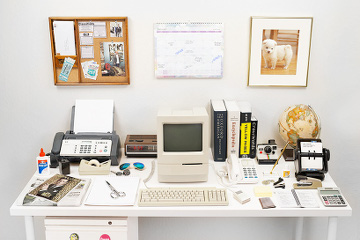Having been in the field of emerging technologies for many years now, often people ask me “what is next? What will technology look like many years from now?” My answer invariably is: “I don’t know,” when the full honest answer would be “… and nobody else does either.” There is no shortage of theories of what that might be. By observing how the world of personal computing evolved from the early days of desktop apps dominance, to a website-centered approach, to today’s always-on, mobile apps stream, the trend seem to be moving the user experience (UX) toward technologies that are increasingly more integrated, smaller and pervasive in our analog lives.
Arthur C. Clarke said back in 1973 that “Any sufficiently advanced technology is indistinguishable from magic,” while many after him, including the late Steve Jobs, also claimed that “great technology is invisible.” So there you go: as technology advances, it will look less and less like what we perceive as technology today, and if we could see that future, it would look like magic to us. At some point, developing pencils and paper was a huge technology advancement, but most people would not call them technology today. My guess is that the world of tomorrow will to some extent resemble more and more like the world of yesterday, with technology becoming less conspicuous, but more present, and streams will be a big part of it.
As a teenager, I was obsessed with trying to understand how the world works – to the point that I decided to get a Bachelor of Science degree in Biology. Naturally, decades after finishing university, I obviously still don’t know how the world works, but I have kept an appreciation for the pursuit of that elusive objective. I recall being bothered by not having a prompt answer to a simple question from an elementary school boy during a science class I was helping with: “why do objects far away from us look smaller than those close to us?” I only got the answer a few days later, in a bar conversation with other biology students: our eyes are pretty much like a point sensor to all light around us, and what we perceive as size is actually the angle between the extremities of objects in our visual field. That’s a convoluted way to explain this:

I just wish I had Quora back then 🙂
We perceive the visible world around us by the streams of light that get to our eyes. Likewise, we perceive the audible world by the streams of sound that get to our ears, and the same is true for our other senses. Human beings are sophisticated sensor engines that experience life via a multitude of streams that continuously feed our brains. Sorry, that dry statement just ruined all the beauty and mystery behind life.
It’s hard to see it now, but the way we moved from desktop apps, to websites, to portable devices that keep notifying us about hundreds of things every day is somewhat related to the way we moved from being hunters, to farmers, to buying everything online from Amazon. Or the way we moved from oral story telling, to writing and reading books, to radio, TV, and finally, Netflix. We always start by going where things are, and then try to make things go where we are. Our LinkedIn, Facebook, Twitter, Instagram, SnapChat, and WhatsApp streams are glimpses into what that “everything-is-a-stream” future look like. Instead of us visiting hundreds of websites hunting for information, we seem to prefer that information flows to us via a handful of curated streams.
Today, in pretty much any human gathering event, you’ll see people interfacing with technology via screens: TV, computers, smartphones, smart watches, and so on are pervasive in birthday parties, sports events, restaurants, and the workplace. As technologies behind virtual reality, augmented reality, sensors, and wearables evolve, we may end up consuming all those streams of information without the need of gadgets extraneous to us. Many years from now, you may be able to spend a good few hours among friends in a party, a restaurant, or a bar like generations before us used to: without witnessing anybody checking status updates or taking selfies with their mobile devices. There will be plenty of digital streams there, but like magic, they may be invisible to all. Riffing on the great evolution of the desk video, by the folks from BestReviews, here’s how that transition may look like:
1980
2015
20??
Welcome to the future!







